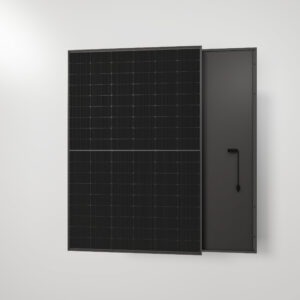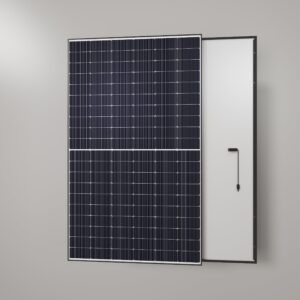Solar panel technology has witnessed significant advancements in recent years, introducing new and innovative panels to the market. As a solar panel installation company, it is crucial to have a comprehensive understanding of the different panel types available and the unique benefits they offer.
Among these, monocrystalline solar panels have gained popularity due to their high performance, increased durability, and aesthetically pleasing appearance. In this article, we will delve into the specifics of monocrystalline solar panels, including their design, functionality, construction, and performance. This knowledge will prove invaluable in enhancing your installation projects.

Monocrystalline solar panels are made using the Czochralski method, which involves creating a single crystal of silicon. The process begins by growing a cylindrical silicon ingot from high-purity, single-crystal silicon, similar to the production of semiconductors. The ingot is then sliced into thin wafers, which form the basis of the solar cells. To optimize their utility, the circular wafers are wire cut into an octagonal shape, resulting in panels with uniform color and a distinctive appearance.
These monocrystalline solar cells provide electrons with more space to move, allowing for better flow of electricity. When sunlight falls on the panel, the solar cells absorb the energy, generating an electric field. This field causes electrons to break free from their atoms and flow through the cells, resulting in the production of electrical current and voltage. The electricity generated can be used to power devices that require direct current (DC). If you wish to power appliances that require alternating current (AC), an inverter can be connected to the solar panels, which converts DC into AC.
Monocrystalline solar panels are widely recognized for their high efficiency and power capacity, making them a preferred choice among various panel types. These panels can achieve efficiencies ranging from 17% to 20%, with certain manufacturers even reaching up to 22%. This means that approximately 17% to 20% of the sunlight falling on the panels is absorbed and converted into usable electricity.
The superior efficiency of monocrystalline panels can be attributed to their construction using single crystal silicon. This crystal structure facilitates easier movement of electrons through the cells compared to other panel types. As a result, monocrystalline solar panels can generate more power per square foot than polycrystalline or thin-film modules.
The higher power output of monocrystalline panels translates to the requirement of fewer panels to generate the same amount of power compared to other panel types. This advantage makes them particularly suitable for installations with limited roof space.
By understanding the construction and working principle of monocrystalline solar cells, as well as their average performance, you gain valuable insights into the capabilities and advantages of this panel type. Such knowledge enables you to make informed decisions when selecting the most suitable solar panel option for your specific needs.
| Monocrystalline
solar panels |
Polycrystalline
solar panels |
|
| Composition | Monocrystalline panels are made from a single crystal structure, typically of silicon, which results in a uniform black appearance. | Polycrystalline panels are composed of multiple silicon crystals, giving them a speckled blue color. |
| Efficiency | Monocrystalline panels generally have higher efficiency, converting sunlight into electricity more effectively. They can achieve efficiency levels of 20% or higher | The efficiency of polycrystalline panels typically ranges between 15% and 17%. |
| Space Requirements | Monocrystalline panels produce more power per square foot compared to polycrystalline panels. This means that monocrystalline panels require less space to generate the same amount of electricity as polycrystalline panels. | Since polycrystalline solar panels are generally less efficient, they require more space to generate the same amount of electricity as monocrystalline panels. |
| Cost | Monocrystalline panels are usually more expensive than polycrystalline panels. | Polycrystalline panels are generally more affordable than monocrystalline panels. |
| Appearance | Monocrystalline panels have a sleek and uniform appearance due to their black color, which some people find aesthetically appealing. | Polycrystalline panels, with their blue speckled appearance, may be less visually consistent. |
This completely black solar panel has a sleek and minimalist design. Thanks to the applied glass-glass technology, our ELAT-FB-GG-430 is extremely durable. The double layer of glass protects your panel like no other against weather conditions and UV radiation, resulting in a greater energy output in the long term.

A solar panel for the general public, that is this ELAT-FB-SG-430. This superior panel is full black. The top performance of the panel is due to the cutting-edge TOPCon technology. With a power output of 430 Pmax/W, the performance of this product is almost unbeatable.

Our best performing solar panel in terms of overall efficiency. The module efficiency of our ELAT-BF-SGP-480 reaches a peak level of 22,24 % and has a maximum power output of 480 Pmax/W, thanks to the outstanding TOPCon technology.

Want to know everything about our solar panels? Download our datasheets or get in touch with our team!
17 – 18 september mark the dates when ELAT Solar showcases how we’re redefining the solar landscape at Solar & Storage Live Zurich.
We’re excited to meet you and demonstrate how being different is the key to unlocking a brighter, greener future.